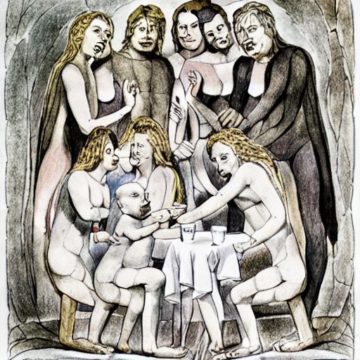 Jessica Winter in The New Yorker:
Jessica Winter in The New Yorker:
Cults thrive in isolation, and this poses a challenge for the urban cult leader. Jim Jones, of the Peoples Temple, exerted an unsettling degree of influence on San Francisco politics of the late nineteen-seventies but was eventually forced to flee to his doomed jungle outpost in Guyana. Charles Manson made halting inroads in the late-sixties Los Angeles music scene while his Family hunkered down on the fifty-five-acre Spahn Movie Ranch. Scientology has prominent real-estate holdings in major cities across the world, but its élite management unit, the Sea Org, was originally intended to operate in international waters, in order to evade government and media scrutiny.
At its peak, in the mid- to late seventies, the psychoanalytic association known as the Sullivanian Institute had as many as six hundred patient-members clustered in apartment buildings that the group bought or rented on the cheap on Manhattan’s Upper West Side. They also ran an experimental theatre troupe, called the Fourth Wall, on the Lower East Side. The Sullivanians adhered to the same principles and traditions as many of the ashrams and rural intentional communities of the era: polyamory, communal living, group parenting, socialist politics. But they came to their belief system through the gateway of psychoanalysis, the self-actualization tool of the urbane intellectual. And they enacted their beliefs on a crowded concrete island of nearly a million and a half people, often while holding down high-status jobs as physicians, attorneys, computer programmers, and academics. The institute’s co-founder and reigning tyrant, Saul Newton, who sat atop the organization from the mid-nineteen-fifties until the mid-nineteen-eighties (he died in 1991), may have come closer than any of his far more notorious peers to establishing a truly metropolitan cult—its members visible but its practices obscure.
More here.
